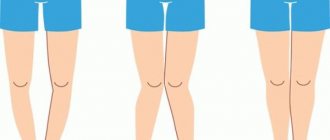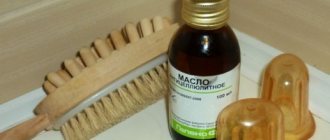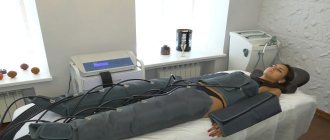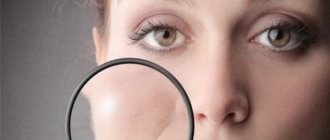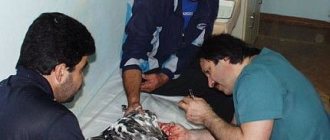Author: Olga Frolova - fitness nerd Place in the ranking of authors: 17
(become an author)
Date:
2017-06-19
Views:
27,622
Rating:
4.3
| All articles by the author >> | Medals articles >> |
Articles are loading...
The lower leg muscles of homo sapiens are rightfully considered the most genetically predetermined part of the body. In nature, there are both absolutely stunning calves that have never seen iron, as well as very modest specimens even from competitive bodybuilders. Why do we get “stuck” shins so often, and how to deal with it?
By the time you first come to the gym, the triceps surae muscle is already incredibly trained. It consists of the deep soleus and superficial gastrocnemius muscles, which are active from the moment you can walk. Even when stationary, they are tense and prevent you from tipping forward.
If you have to develop any lateral back muscles almost from scratch, then your calves are already pumped to about half their genetic limit. At this stage, any muscle will progress very sluggishly. In addition, the number of slow muscle fibers (which are adapted to low-intensity work and grow twice as fast as fast fibers) in the soleus muscle can reach 90%.
You can determine approximately to what size you can personally pump up your shin like this. If your ankle circumference exceeds your wrist circumference by at least 20% (and this is almost never the case), then the maximum possible calf volume will be no less than the maximum volume of the upper arm.
This means that genetics is too weak an excuse for giving up without a fight. And the main task is to create stress for your legs of such power that they have not yet encountered.
Structure of the lower leg
So, the lower leg is an intermediate formation, which consists of the following structures:
- Tibia. A tubular bone that has two growth zones located slightly central to the diaphyses. The diaphysis is the extension of the bone at one end. The joint, ligaments, and periarticular bursae are usually attached to it. The diaphysis is covered with cartilage tissue, which ensures reliable attachment of the ligamentous-articular apparatus to the bone.
- The fibula is also tubular, but of smaller diameter. It is located lateral to the tibia. This bone also has two growth zones near the diaphysis and a large number of ligaments.
- Knee-joint. A complex articulation that consists of the articular surfaces of three bones. It is a mistake to think that stretching it will lead to lengthening of the legs. Constant mechanical stretching of the knee joint ligaments will only lead to habitual instability.
- Ankle joint. Its basis is the talus bone, on which the ankles of the tibia and fibula rest.
- The calf muscles are one of the anatomical structures whose length is easiest to change. About a million exercises have already been invented and developed for stretching, pumping and shaping the muscles of the lower leg.
- Ligaments and tendons are dense, hard-to-change structures that hold bones and muscles together. It is possible to stretch ligaments at home and in the gym, but this requires a little more time than working with muscles.
Exercises to lengthen the lower leg
Lengthening the lower leg without surgery is only possible up to 12-14 years of age. Then the bone growth zones are still well developed and can be influenced.
As you can see, most gymnasts are short in stature with short legs relative to the body. This is due to the peculiarity of the training process in the gym.
During the majority of gymnastics training, athletes run, jump and work on developing the speed and strength qualities of the muscle, which increases its tone and volume. Lack of proper stretching often results in stunted bone growth.
Exercises for lengthening and straightening the lower leg without the Ilizarov apparatus:
- Feet together. Standing on a flat surface, bend down and try to touch your palms to the floor.
- Sitting on the floor, grab your toes with your hands. Slowly pull your foot towards you until you feel a characteristic pain in the calf muscles.
- Sitting on the floor, take your right leg in your hands. Maintaining the position of the leg straightened at the knee, gradually raise the leg up to the nose.
- Sitting on the floor, grab your heels with your hands and try to touch your stomach to your hips. It is better to make springy, gentle movements until your nose touches your knees.
- Standing on a step or step platform (or simply on some kind of elevation), put your feet together. Make springy downward bends, trying to lower your hands below the level of the supporting surface.
- Standing on the wall bars on one leg, we focus on the front of the foot. Hands hold the bar at waist level. We try to rise on our toes, moving our body along the stairs. The knee of the leg must be straight. The exercise is performed only using the strength of the calf muscle, do not use your hands. The greater the amplitude of movement of the heel up and down, the greater the effect of the exercise.
- Squatting, we bring one leg forward. We pull the toe of the straightened leg towards ourselves. We make small springy bends, trying to touch the thigh of the straightened leg with our stomach. The knee of the second leg is bent, the body weight is on the heel of the bent leg. To enhance the effect of the exercise, you need to pull your heel towards you as much as possible with your hand or straighten your leg to an elevation.
Lengthening the lower leg using exercise machines
A specific simulator for lengthening the legs has not yet been invented, but instead an inversion board is now used. This is a specific simulator for developing the muscles of the spine, hip and other large joints.
The point is to relieve the axial load on the spine and joints, which helps improve blood circulation and trophism of soft tissues. Gradually, the cartilaginous formations grow to a sufficient level. This is enough to increase the height and length of bones by 5-10% of the original size.
The inversion board is an improved Evminov board. It allows you to turn a person upside down without much effort and change the angle of the body in any direction.
To stretch your spine, straighten your posture, and visually lengthen your height and leg length, it is not necessary to use only the Evminov apparatus or an inversion board. It’s enough just to hang on the horizontal bar for 10-15 minutes every day.
You can start with 1-2, gradually increase the time and after a month and a half, hang for 20-25 minutes.
It is believed that if you hang on a bar for a few minutes a day for three weeks, you can increase your height by 4-5 cm.
Do not forget that to consolidate the result, you need to do exercises for static muscle tension in a horizontal position. For example:
- Boat – lying on your stomach, raise your arms and legs above the floor at the same time.
- Plank – standing in a position, lying on straight arms and feet, maintain a horizontal position of the torso for several seconds, constantly increasing the duration of the exercise.
You should not expect a miracle: physical exercises can lengthen your lower leg at home only if performed correctly, coupled with taking a large amount of vitamins and minerals for up to 15 years. In adults with a formed skeleton, the legs cannot be lengthened in this way; you will have to consult an orthopedic traumatologist. Rehabilitation after surgical leg lengthening lasts about 6 months.
About the results of leg lengthening at home
- My God! I’m already suffering so much, but I haven’t grown a centimeter and nothing has lengthened!
But when the girl is asked how much “that much” is, it turns out that she had been practicing, horror of horrors, for two whole weeks.
Daily leg measurements are a waste of time
It is recommended to do exercises with weight-bearing loads for 10-15 minutes a day, and they do it for half an hour, hoping that the higher the load, the sooner and more they will be able to lengthen their legs. The result is burst blood vessels in the legs, pain in the bones and muscles, and general fatigue, which kills further desire to exercise.
There is no way to storm or rush here.
How to lengthen your legs: surgery and exercises for lengthening
Today, many people want to become at least 5-10 centimeters taller.
Some were blessed with short stature by nature itself, while others faced this problem due to an acquired or congenital disease of the musculoskeletal system, which caused deformation of the lower extremities. To radically change their shape, you can use surgery. However, deficiencies can be masked in other ways, for example, by choosing clothes and using special exercises. It is worth taking a closer look at the most available options for how to lengthen your legs at home or in the clinic.
Video text
How to lengthen your legs at any age. I share my personal experience and plan for lengthening my legs. In fact, lengthening your legs is not so difficult if you do it in a comfortable and effective way, and not in a way that takes a lot of time and you don’t know whether you will get the result or not. While lengthening your legs, you can watch movies, TV series or play games. It's convenient and practical.

